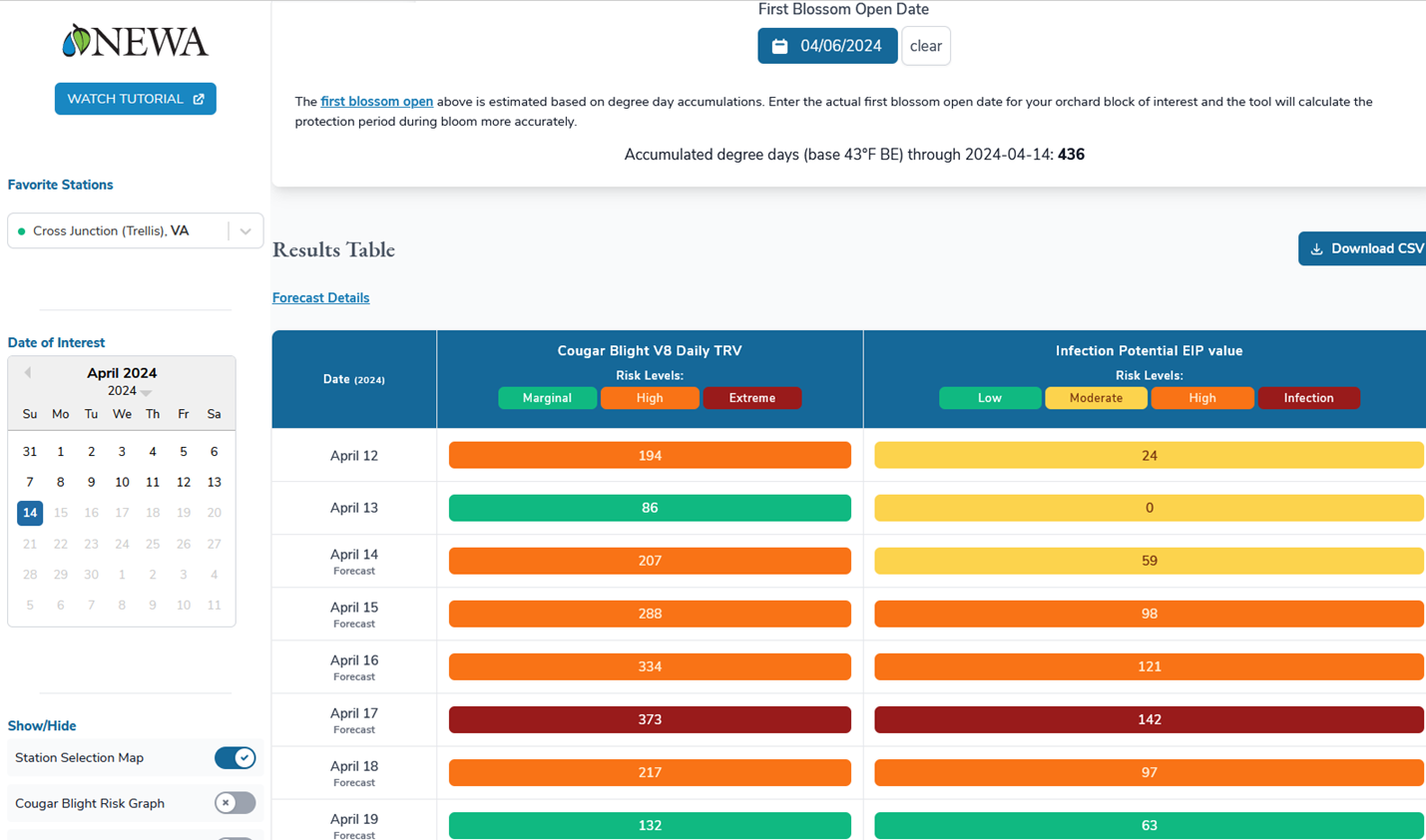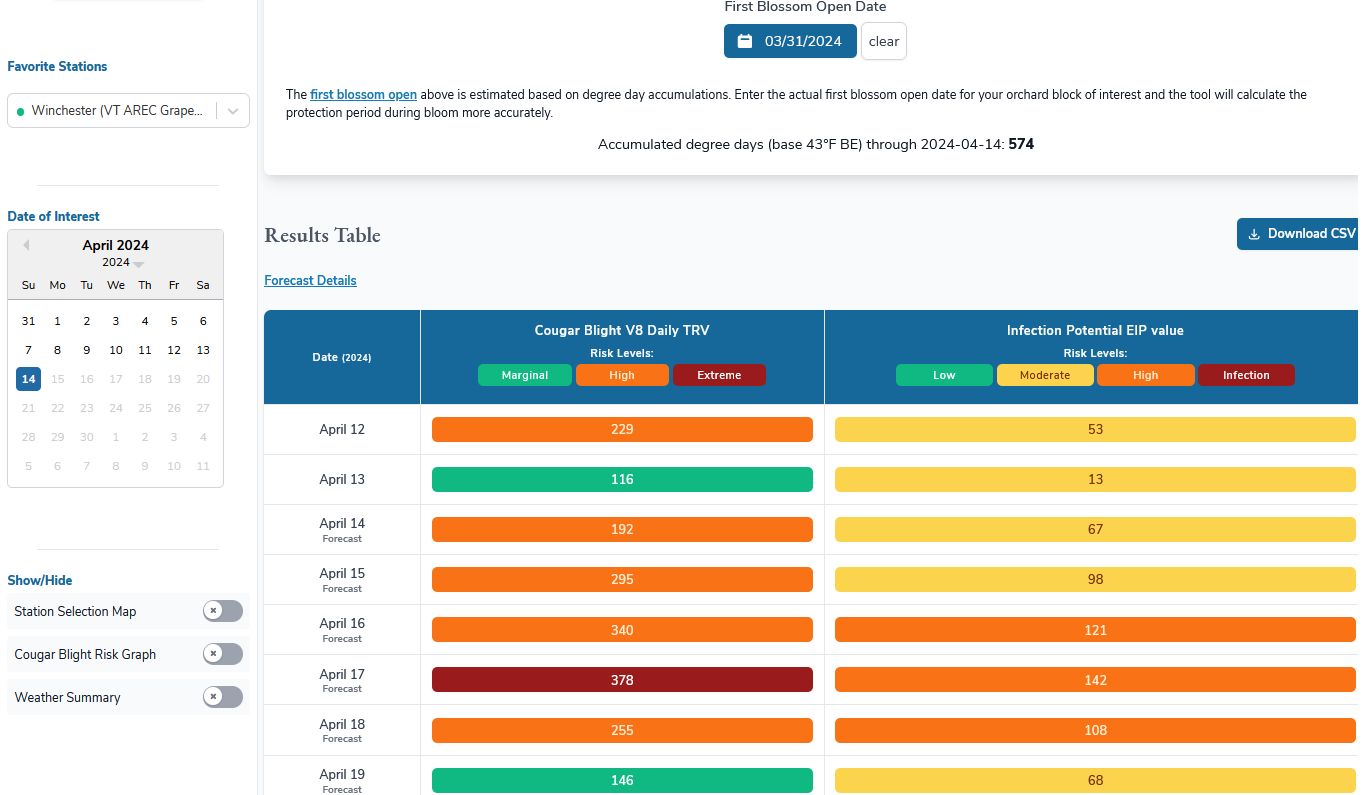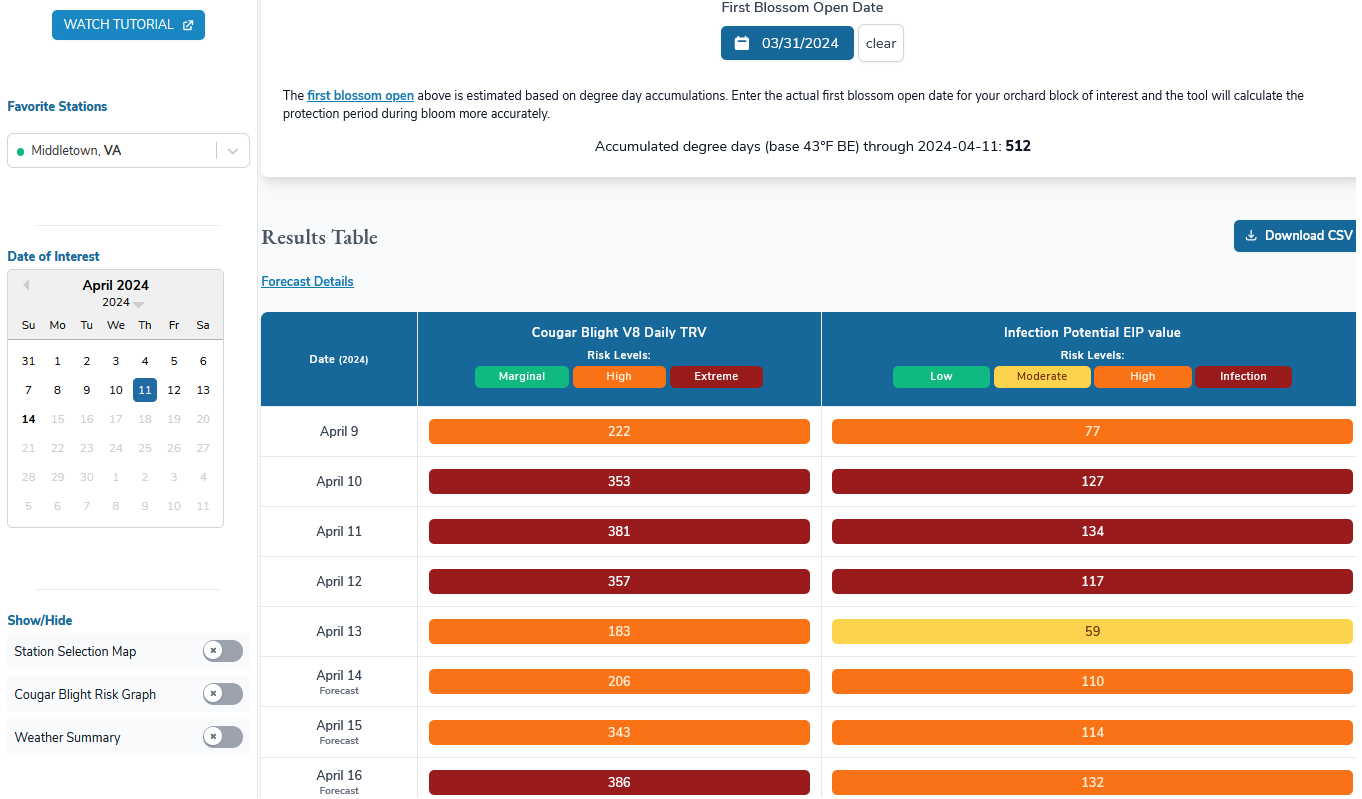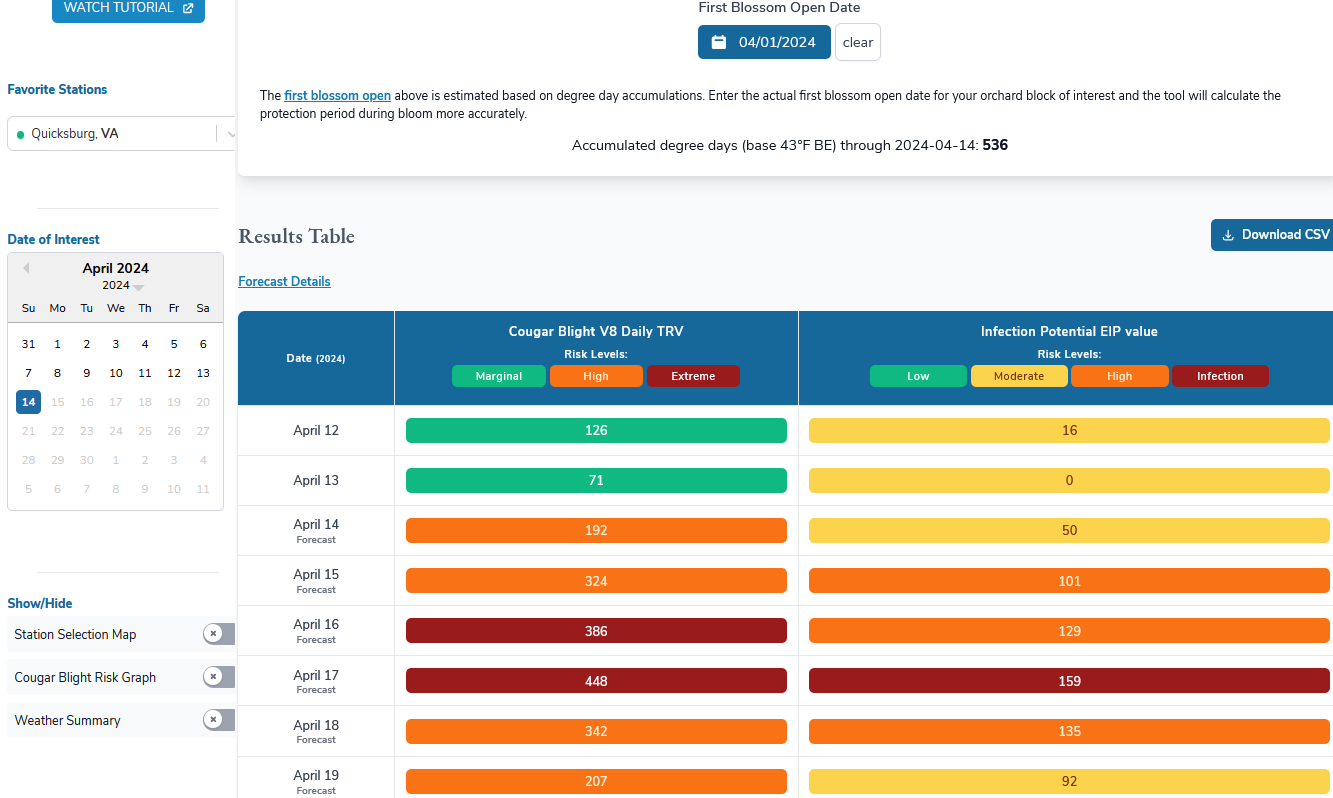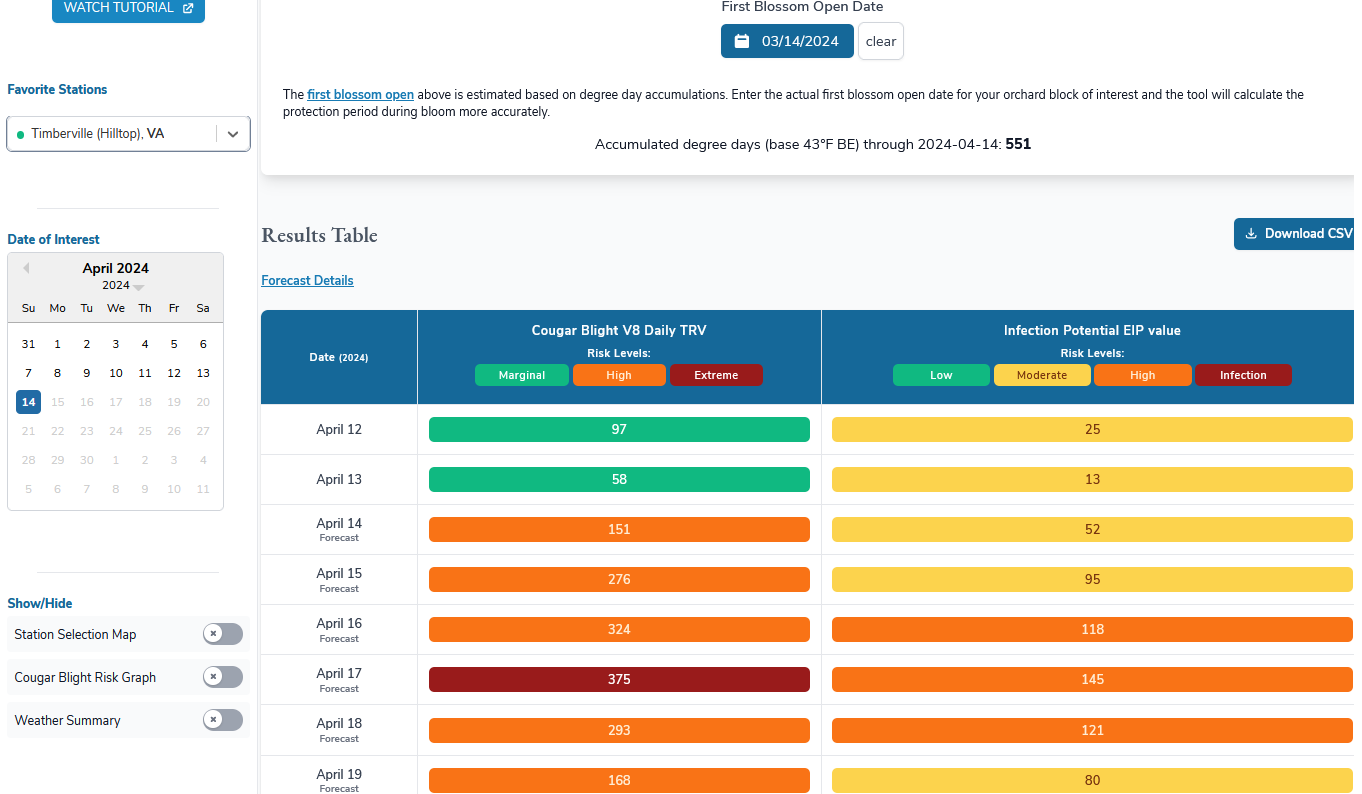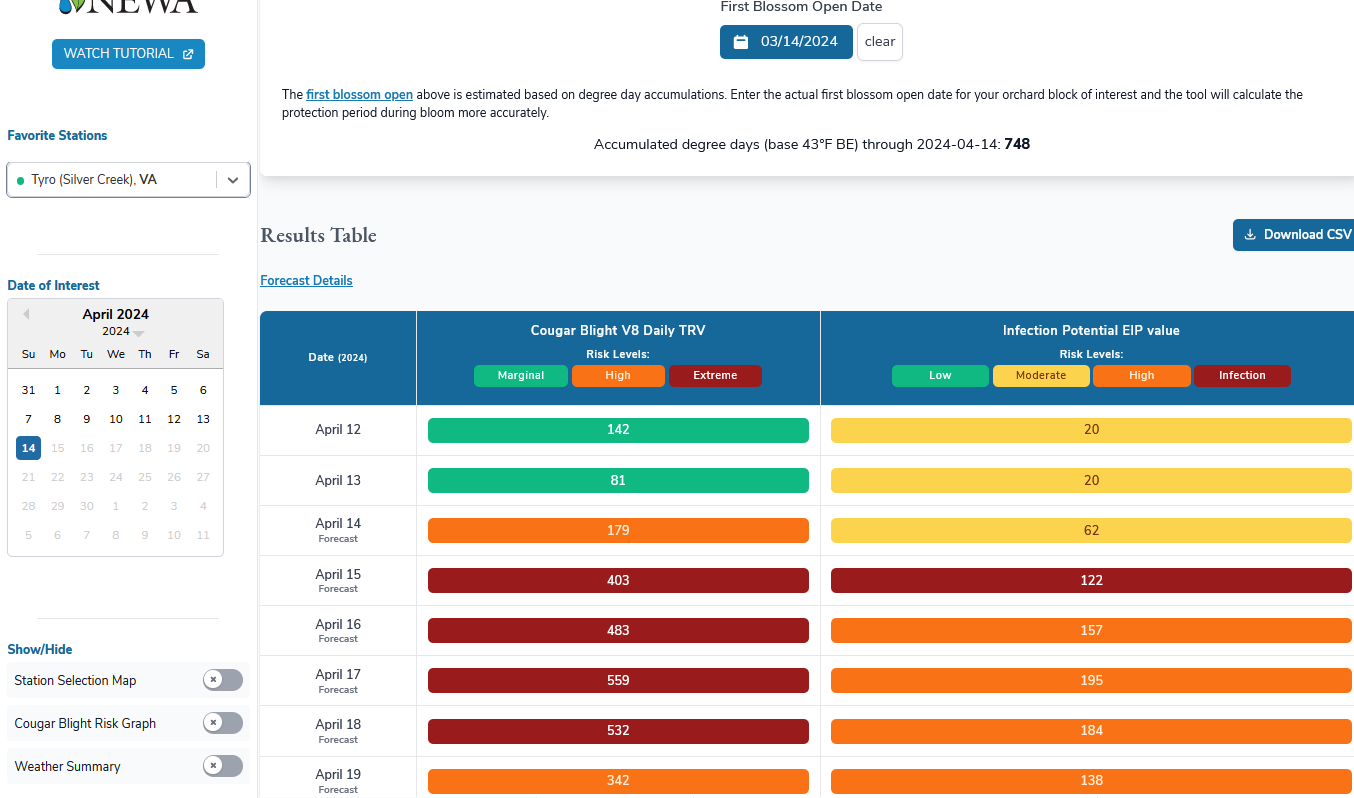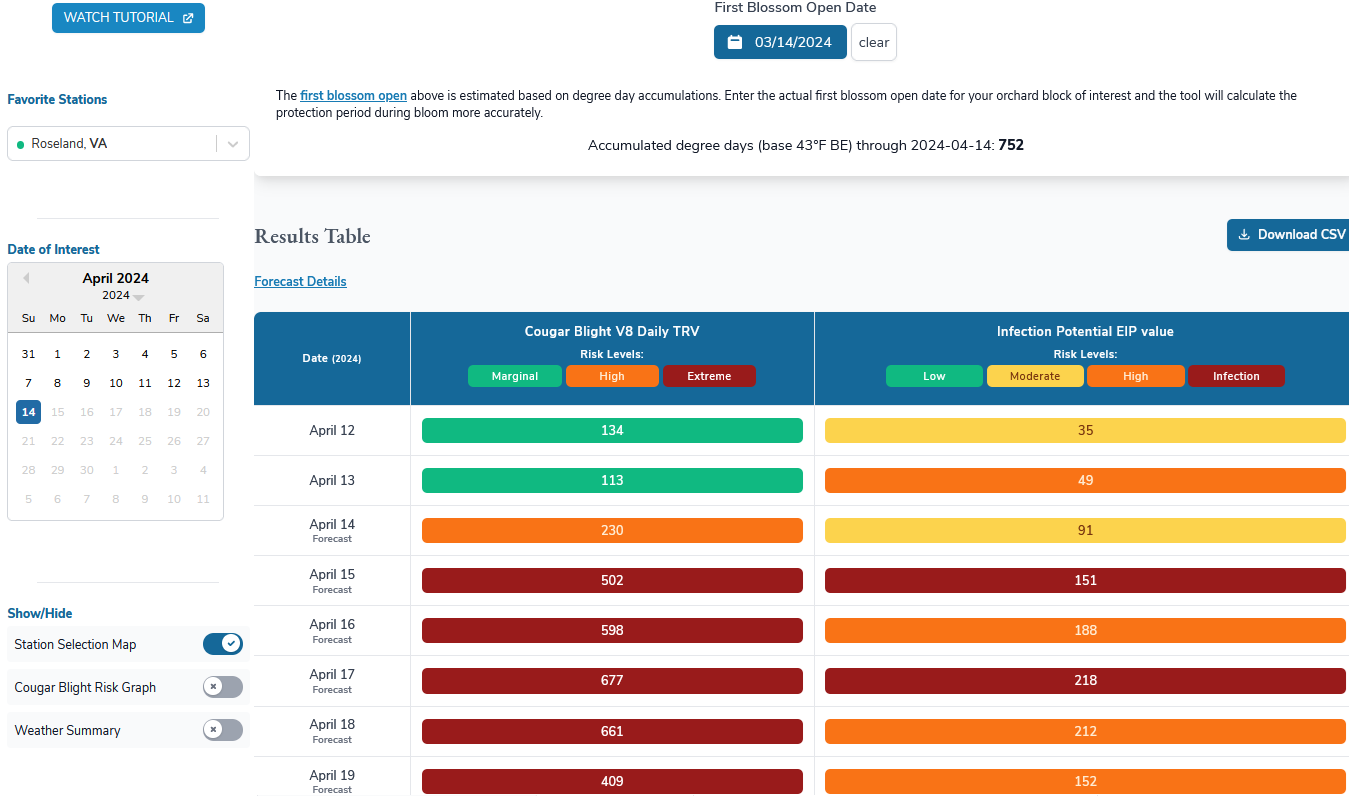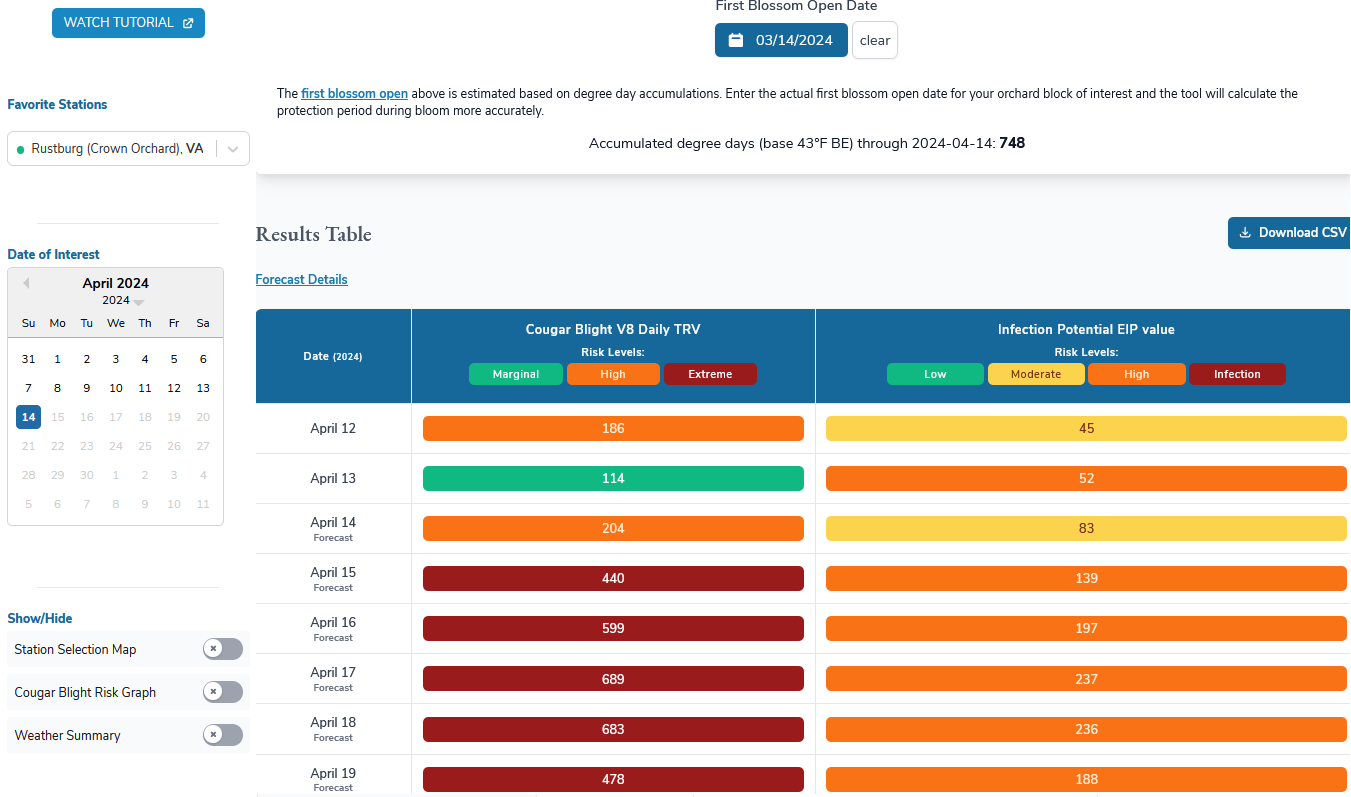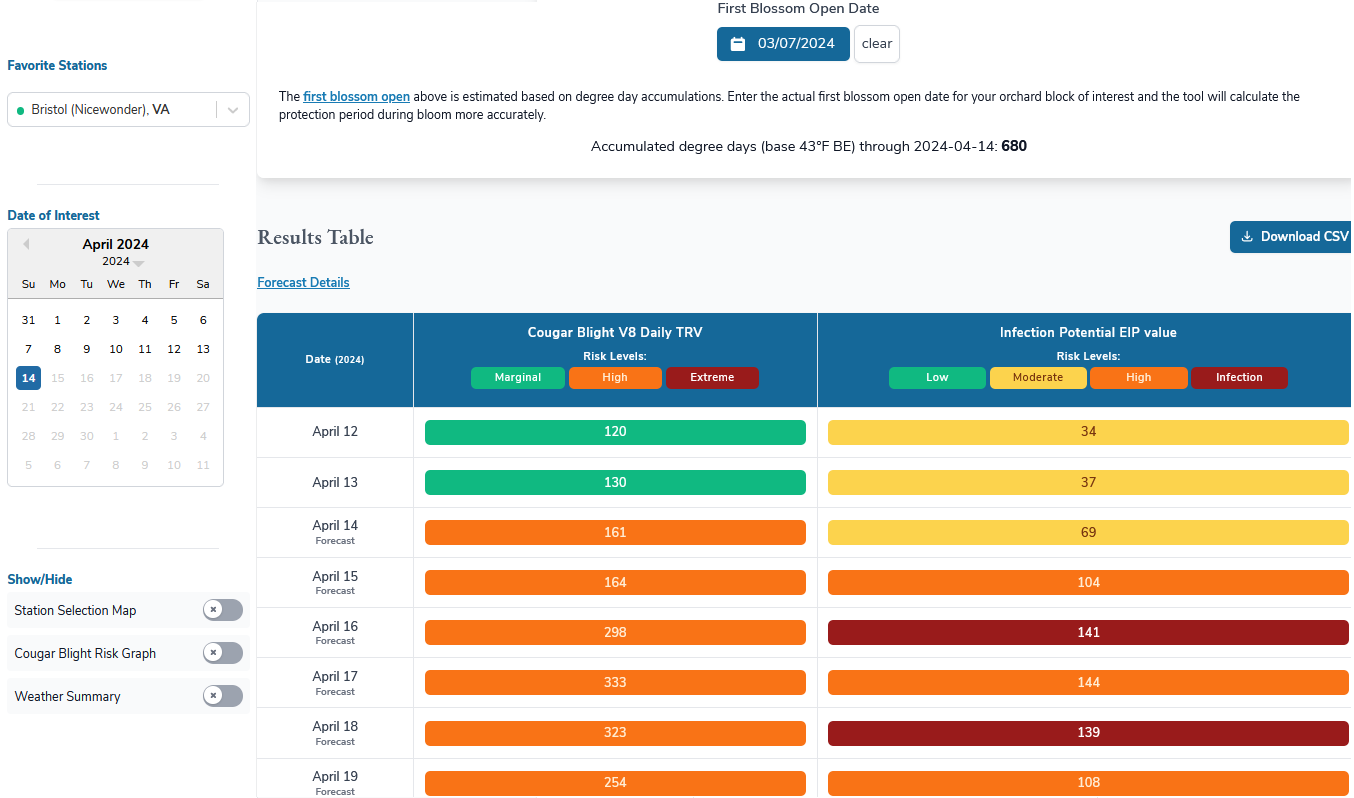Fire Blight Infections Predicted in Several Locations 15 – 18 April: Check Your NEWA EIP Model for Closest Weather Station
We are entering a period of high EIP values in the NEWA EIP model and significant risks for infection if wetting event occurs. Depending on location-specific weather forecast for the next 48 h, infection are predicted differently (see screenshots below): Bristol on 16 and 18 April, Roseland on 15 and 17 April, Tyro on 15 April, Quicksburg on 17 April, Cross Junction on 17 April. Other locations are entering high EIP values over 100 with probably only a wetting period missing to allow infection. Remember, wetting event can be heavy dew, rain, or spray water when you apply fungicides. Therefore, since the risks are wetting event dependent, apply your streptomycin in mix with LI700 or Regulaid within 24 h before a wetting event triggering an infection (dark red field and EIP over 100), or if you will apply a spray during the periods when field is orange and EIP is above 100). To determine your next streptomycin spray application, use the type-in spray date function in the NEW EIP Fire Blight model – scroll down on the page and you will find it – it is below the Wetness Events Table:

In periods of extreme risk for infection for several days continuously, make sure to use this function, as when you enter the spray date, it will re-calibrate the model and it will tell you when next infection will occur and when you must apply the next streptomycin application. With the oncoming extreme warm weather, new flowers are will be opening every day and these newly open flowers are not protected with a previous streptomycin application if they were closed when you applied it the first time. Be very careful to not underestimate fire blight in this way as blocks of 4-7 days during bloom with infection events predicted every day have occurred in previous years and in these cases you need to apply streptomycin almost every second day and to determine exact day to spray you should use this streptomycin date function in the model. Please examine the screenshots below (Source: https://newa.cornell.edu/fire-blight):
